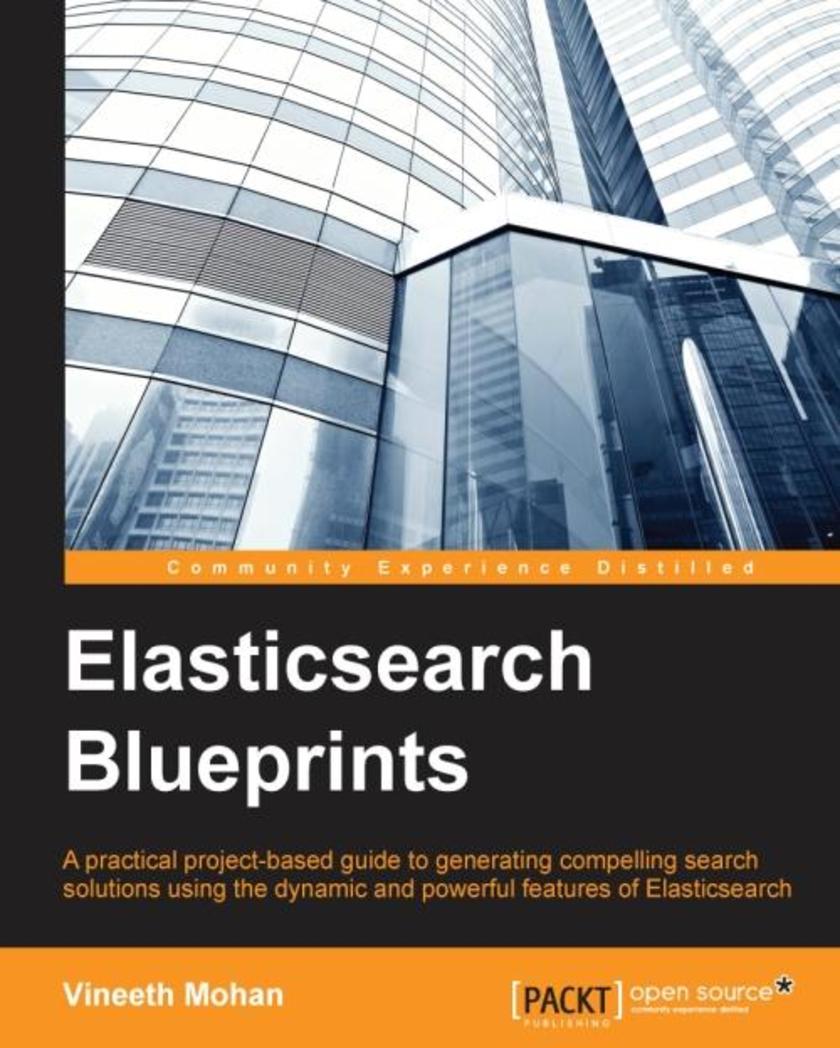
Elasticsearch Blueprints
¥80.65
If you are a data enthusiast and would like to explore and specialize on search technologies based on Elasticsearch, this is the right book for you. A compelling case-to-case mapping of features and implementation of Elasticsearch to solve many real-world use cases makes this book the right choice to start and specialize on Elasticsearch.
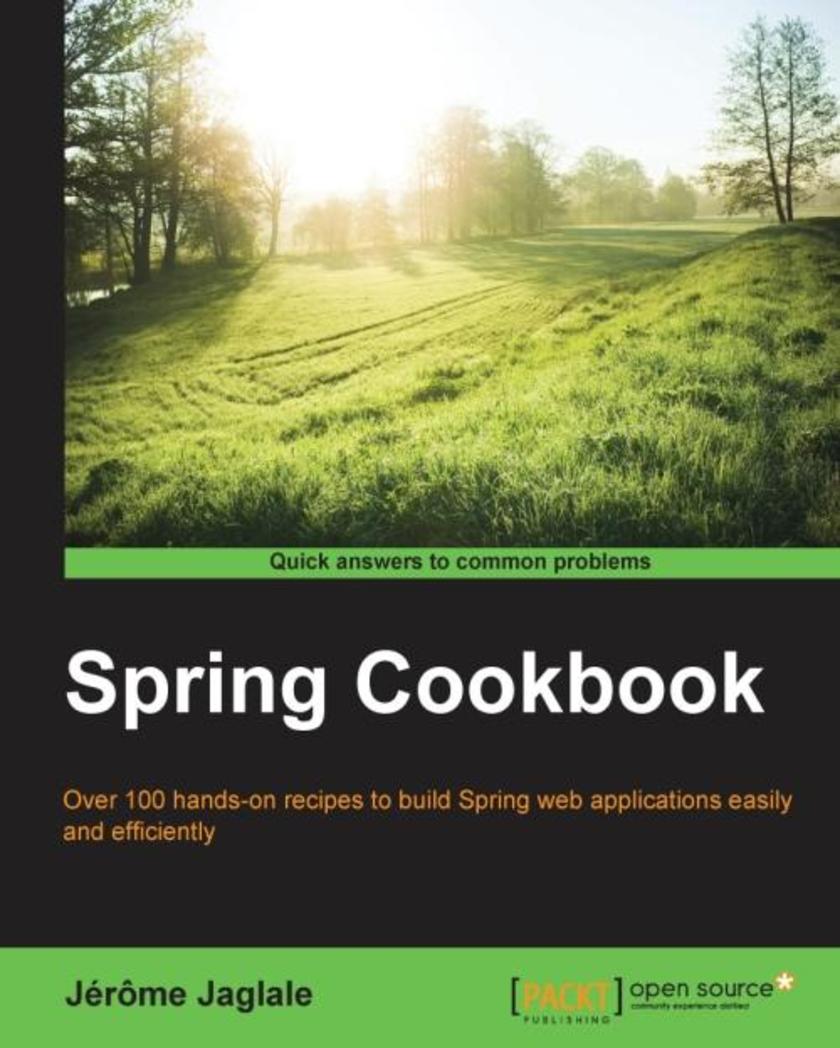
Spring Cookbook
¥80.65
This book is for you if you have some experience with Java and web development (not necessarily in Java) and want to become proficient quickly with Spring.
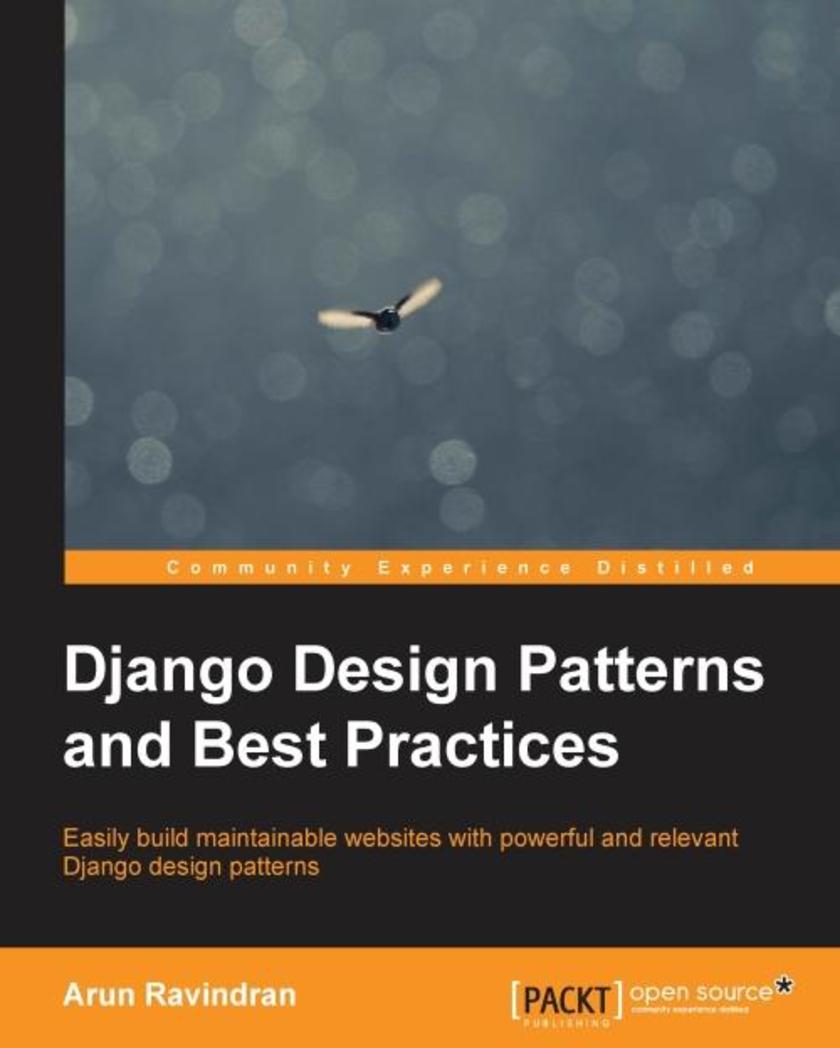
Django Design Patterns and Best Practices
¥80.65
If you want to learn how best to utilize commonly found patterns and learn best practices in developing applications with Django, this is the book for you. This book, like Django itself, is accessible to amateur and professional developers alike and assumes little in the way of prior experience. Although written for Python 3, the majority of the code in this book works in Python 2 or can be easily translated.
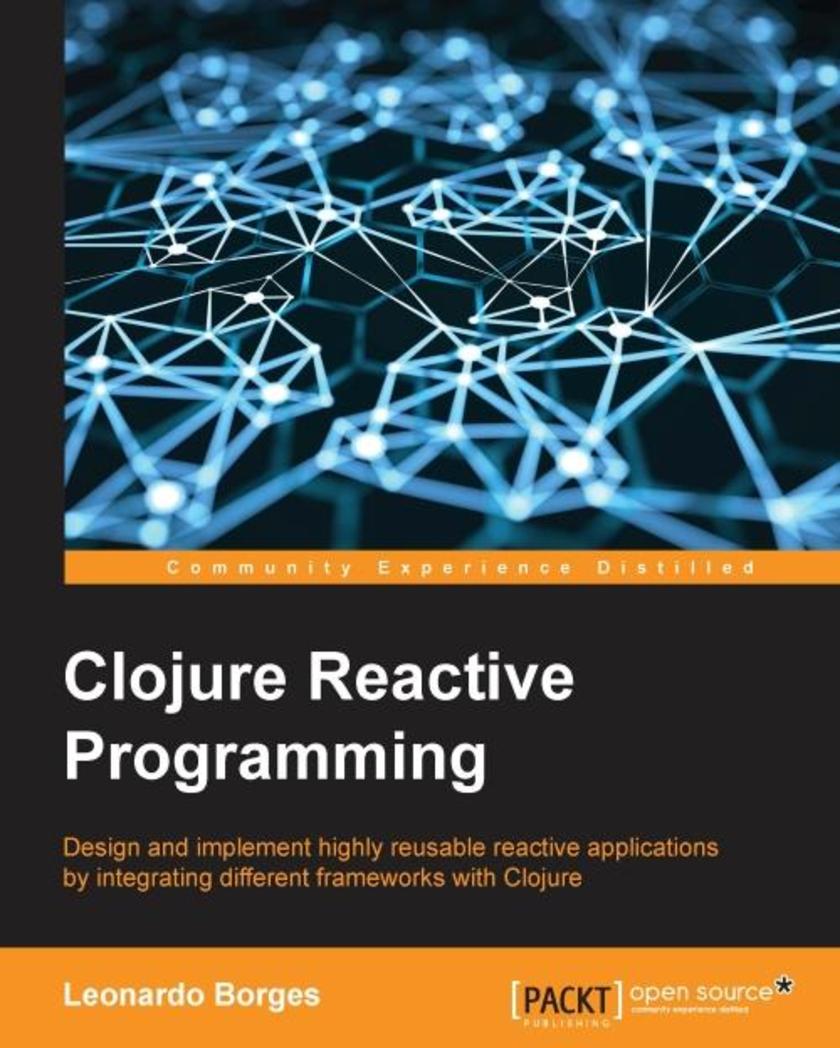
Clojure Reactive Programming
¥80.65
If you are a Clojure developer who is interested in using Reactive Programming to build asynchronous and concurrent applications, this book is for you. Knowledge of Clojure and Leiningen is required. Basic understanding of ClojureScript will be helpful for the web chapters, although it is not strictly necessary.
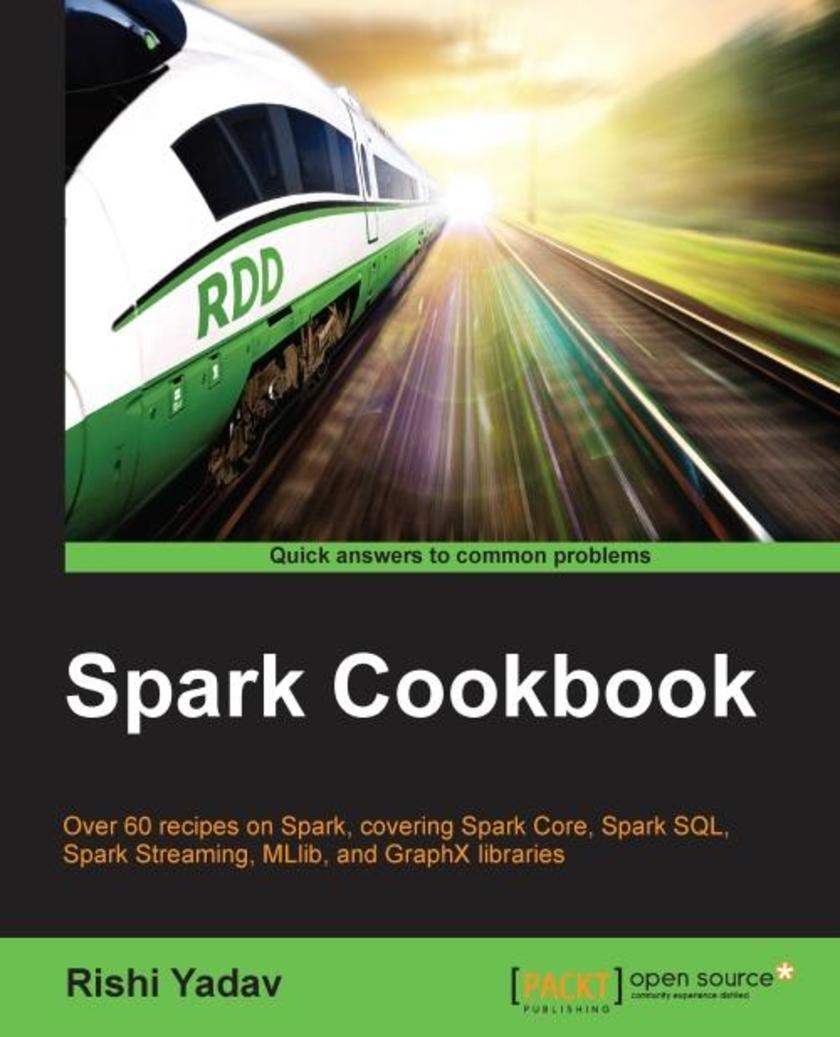
Spark Cookbook
¥80.65
If you are a data engineer, an application developer, or a data scientist who would like to leverage the power of Apache Spark to get better insights from big data, then this is the book for you.
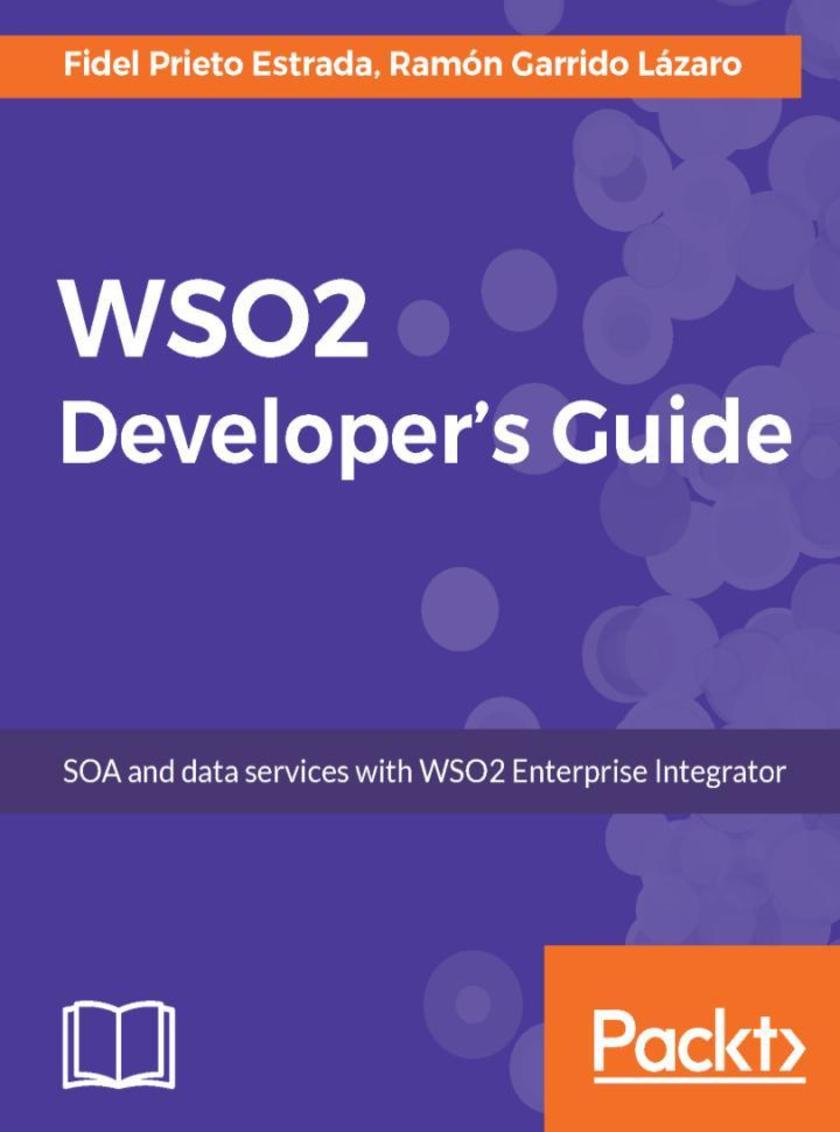
WSO2 Developer’s Guide
¥80.65
WSO2 Made Simple – dive deep into the core concepts of WSO2 to overcome the challenges faced while using the Enterprise Integrator About This Book ? Design, create, and publish services in the WSO2 technology ? Integrate the WSO2 Enterprise Integrator with other components and servers ? Log and test deployed services Who This Book Is For If you are a Java solutions architect or developer and are keen to understand how to build enterprise applications with WSO2, this book is for you. No prior knowledge of WSO2 is expected. What You Will Learn ? Configure WSO2 Enterprise Integrator server in a production environment ? Create SOAP Proxies and REST APIs ? Interact with WSO2 Message Broker ? Write services using the new language: Ballerina ? Schedule automatic tasks for the services you create ? Manage log messages depending on the log level of the system ? Integrate with social networks such as Twitter, Facebook, Instagram, and Yammer ? Test SOAP Services using the Tryit feature and SoapUI tool ? Work with Quality of Services In Detail WSO2 Enterprise Integrator brings together the most powerful servers provided by the WSO2 company for your SOA infrastructure. As an Enterprise Service Bus (ESB), WSO2 Enterprise Integrator provides greater flexibility and agility to meet growing enterprise demands, whereas, as a Data Services Server (DSS), it provides an easy-to-use platform for integrating data stores, creating composite views across different data sources, and hosting data services. Using real-world scenarios, this book helps you build a solid foundation in developing enterprise applications with powerful data integration capabilities using the WSO2 servers. The book gets you started by brushing up your knowledge about SOA architecture and how it can be implemented through WSO2. It will help build your expertise with the core concepts of ESB such as building proxies, sequences, endpoints, and how to work with these in WSO2. Going further, you will also get well-acquainted with DSS data service concepts such as configuring data services, tasks, events, testing, and much more. The book will also cover API management techniques. Along with ESB and DSS, you will also learn about business process servers, the rules server and other components that together provide the control and robustness your enterprise applications will need. With practical use cases, the book covers typical daily scenarios you will come across while using these servers to give you hands-on experience. Style and approach The book is a complete guide and helps you get the right start—from understanding SOA architectures to getting valuable experience with two important integration servers such as ESB and DSS. It will include some real-world practical scenarios to help you master the best practices followed right across the industry and overcome the challenges you're likely to face on a daily basis.
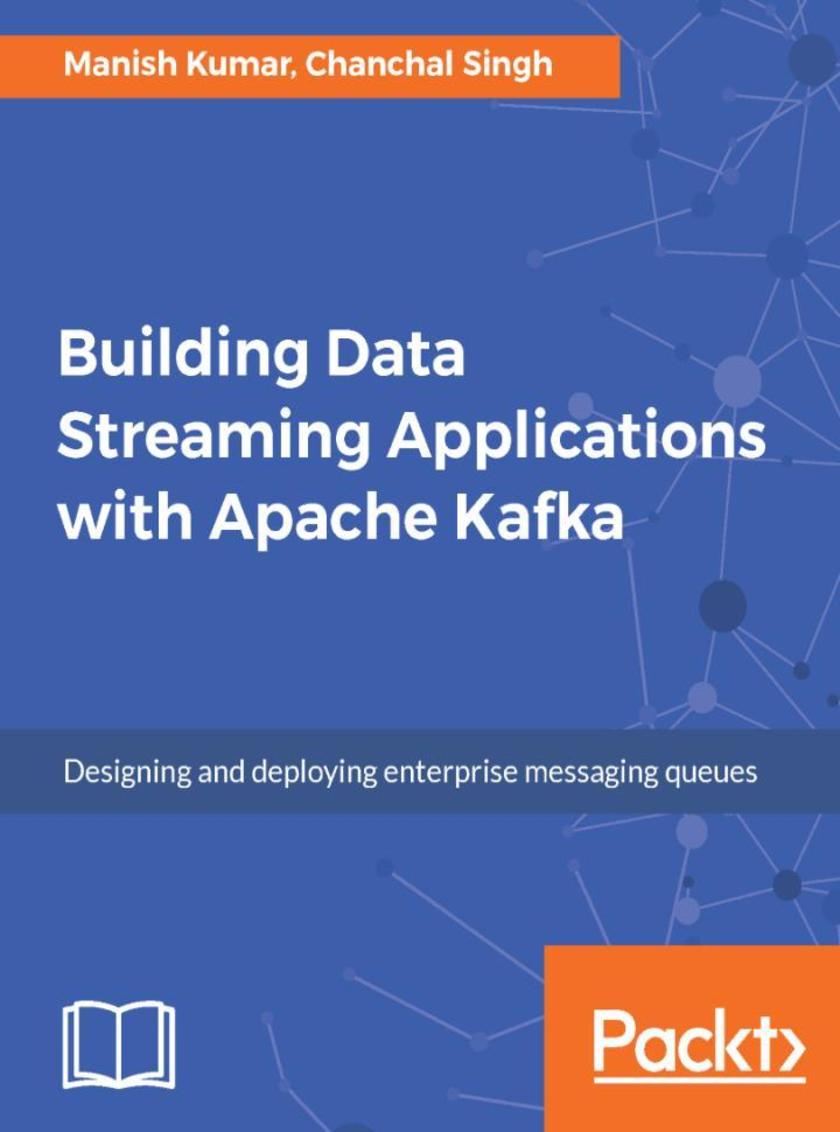
Building Data Streaming Applications with Apache Kafka
¥80.65
Design and administer fast, reliable enterprise messaging systems with Apache Kafka About This Book ? Build efficient real-time streaming applications in Apache Kafka to process data streams of data ? Master the core Kafka APIs to set up Apache Kafka clusters and start writing message producers and consumers ? A comprehensive guide to help you get a solid grasp of the Apache Kafka concepts in Apache Kafka with pracitcalpractical examples Who This Book Is For If you want to learn how to use Apache Kafka and the different tools in the Kafka ecosystem in the easiest possible manner, this book is for you. Some programming experience with Java is required to get the most out of this book What You Will Learn ? Learn the basics of Apache Kafka from scratch ? Use the basic building blocks of a streaming application ? Design effective streaming applications with Kafka using Spark, Storm &, and Heron ? Understand the importance of a low -latency , high- throughput, and fault-tolerant messaging system ? Make effective capacity planning while deploying your Kafka Application ? Understand and implement the best security practices In Detail Apache Kafka is a popular distributed streaming platform that acts as a messaging queue or an enterprise messaging system. It lets you publish and subscribe to a stream of records, and process them in a fault-tolerant way as they occur. This book is a comprehensive guide to designing and architecting enterprise-grade streaming applications using Apache Kafka and other big data tools. It includes best practices for building such applications, and tackles some common challenges such as how to use Kafka efficiently and handle high data volumes with ease. This book first takes you through understanding the type messaging system and then provides a thorough introduction to Apache Kafka and its internal details. The second part of the book takes you through designing streaming application using various frameworks and tools such as Apache Spark, Apache Storm, and more. Once you grasp the basics, we will take you through more advanced concepts in Apache Kafka such as capacity planning and security. By the end of this book, you will have all the information you need to be comfortable with using Apache Kafka, and to design efficient streaming data applications with it. Style and approach A step-by –step, comprehensive guide filled with practical and real- world examples
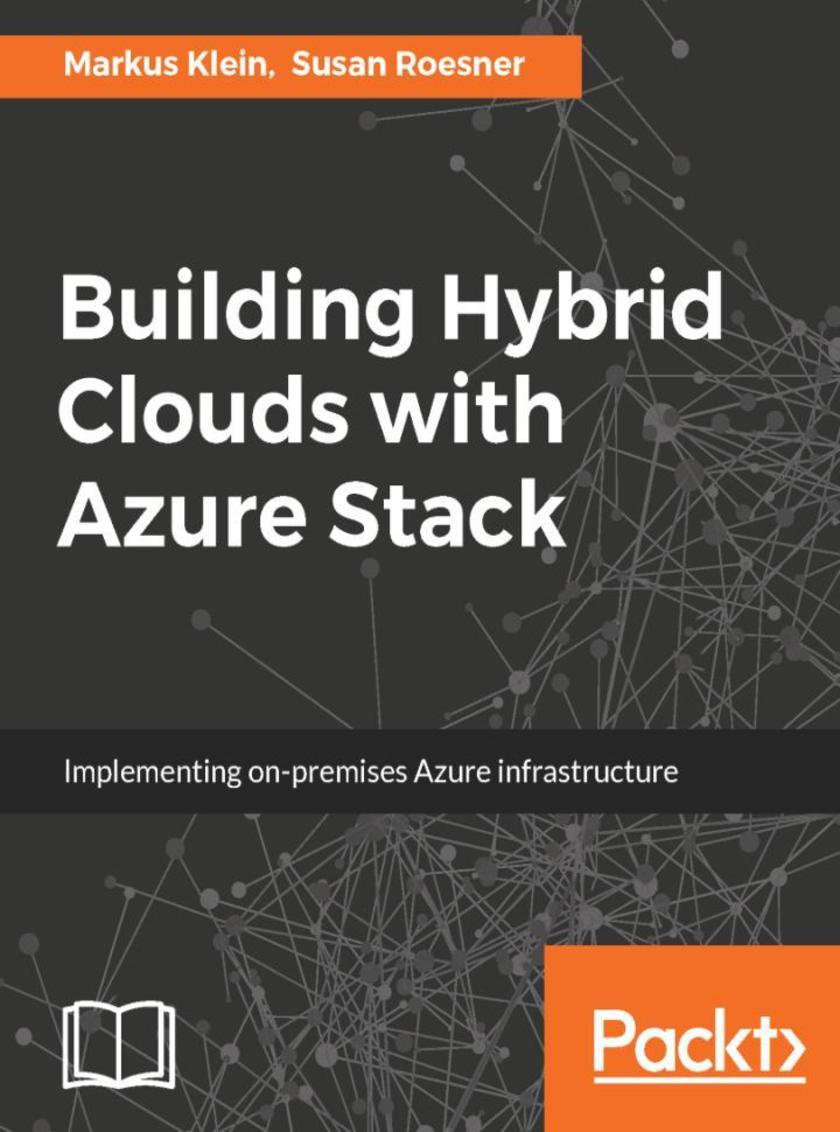
Building Hybrid Clouds with Azure Stack
¥80.65
Bring the power of Microsoft Azure Hybrid Cloud technology to your datacenter. About This Book ? Build and deploy software-defined infrastructures and deliver Azure-based IaaS and Paas services in your datacenter ? Use Azure Stack to leverage your current infrastructure with Microsoft Hybrid Cloud and get the best of both worlds ? Unlock greater levels of performance and flexibility and save your organization money, time, and resources Who This Book Is For The book is for administrators and architects who are planning to implement or administer a hybrid cloud infrastructure using Microsoft Cloud Technology. This book is ideal for those who are looking forward to implement and run a hybrid cloud infrastructure with PaaS, SaaS and IaaS services. What You Will Learn ? Gain a clear understanding of Azure Stack design ? Set up storage, network and compute services in Azure Stack ? Implement and run a hybrid cloud infrastructure with PaaS, SaaS, and IaaS services ? Get an overview of the automation options in Azure Stack ? Integrate Azure public services such as multi-factor authentication and Azure AD with Azure Stack ? Learn about the services available in the future In Detail Azure Stack is all about creating fewer gaps between on-premise and public cloud application deployment. Azure Stack is the next logical evolution of Microsoft Cloud Services to create a true Hybrid Cloud-ready application. This book provides an introduction to Microsoft Azure Stack and the Cloud First Approach. Starting with an introduction to Microsoft Azure Stack Architecture, the book will help you plan and deploy your Microsoft Azure Stack. Next, you will learn about the Network and Storage option in Microsoft Azure Stack and you'll create your own private cloud solution. Finally, you will understand how to integrate Public Cloud Services with Microsoft Azure Stack and extend it using the 3rd Party Resource Provider. After reading the book, you will have a good understanding of an end-to-end process for designing, implementing, offering, and supporting cloud solutions for enterprises or service providers. Style and approach This book is a practical guide to help you unlock a hybrid cloud stack using Azure Stack. Using a straight forward and easy to implement approach, this book guides you through the basic planning for a hybrid cloud stack, describes the infrastructure technologies Azure Stack is based on, and explains how to deploy and administer an Azure Stack-based infrastructure.
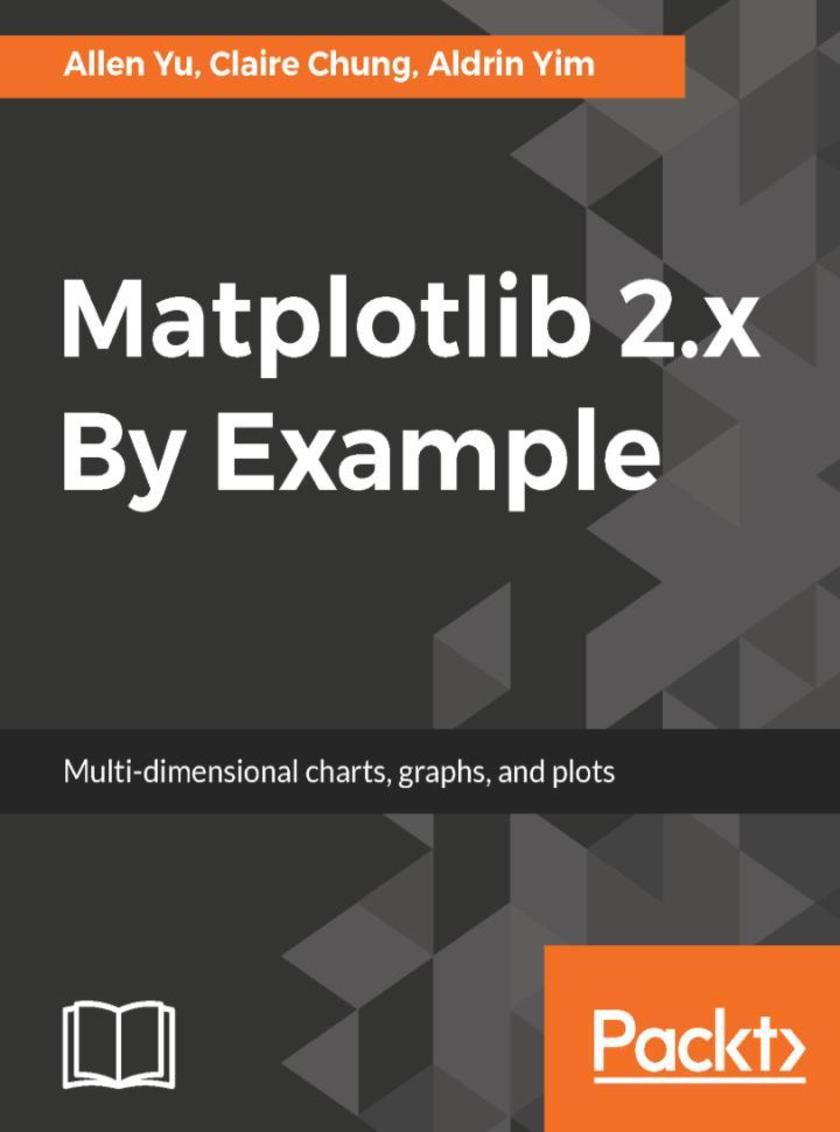
Matplotlib 2.x By Example
¥80.65
Unlock deeper insights into visualization in form of 2D and 3D graphs using Matplotlib 2.x About This Book ? Create and customize live graphs, by adding style, color, font to make appealing graphs. ? A complete guide with insightful use cases and examples to perform data visualizations with Matplotlib's extensive toolkits. ? Create timestamp data visualizations on 2D and 3D graphs in form of plots, histogram, bar charts, scatterplots and more. Who This Book Is For This book is for anyone interested in data visualization, to get insights from big data with Python and Matplotlib 2.x. With this book you will be able to extend your knowledge and learn how to use python code in order to visualize your data with Matplotlib. Basic knowledge of Python is expected. What You Will Learn ? Familiarize with the latest features in Matplotlib 2.x ? Create data visualizations on 2D and 3D charts in the form of bar charts, bubble charts, heat maps, histograms, scatter plots, stacked area charts, swarm plots and many more. ? Make clear and appealing figures for scientific publications. ? Create interactive charts and animation. ? Extend the functionalities of Matplotlib with third-party packages, such as Basemap, GeoPandas, Mplot3d, Pandas, Scikit-learn, and Seaborn. ? Design intuitive infographics for effective storytelling. In Detail Big data analytics are driving innovations in scientific research, digital marketing, policy-making and much more. Matplotlib offers simple but powerful plotting interface, versatile plot types and robust customization. Matplotlib 2.x By Example illustrates the methods and applications of various plot types through real world examples. It begins by giving readers the basic know-how on how to create and customize plots by Matplotlib. It further covers how to plot different types of economic data in the form of 2D and 3D graphs, which give insights from a deluge of data from public repositories, such as Quandl Finance. You will learn to visualize geographical data on maps and implement interactive charts. By the end of this book, you will become well versed with Matplotlib in your day-to-day work to perform advanced data visualization. This book will guide you to prepare high quality figures for manu*s and presentations. You will learn to create intuitive info-graphics and reshaping your message crisply understandable. Style and approach Step by step comprehensive guide filled with real world examples.
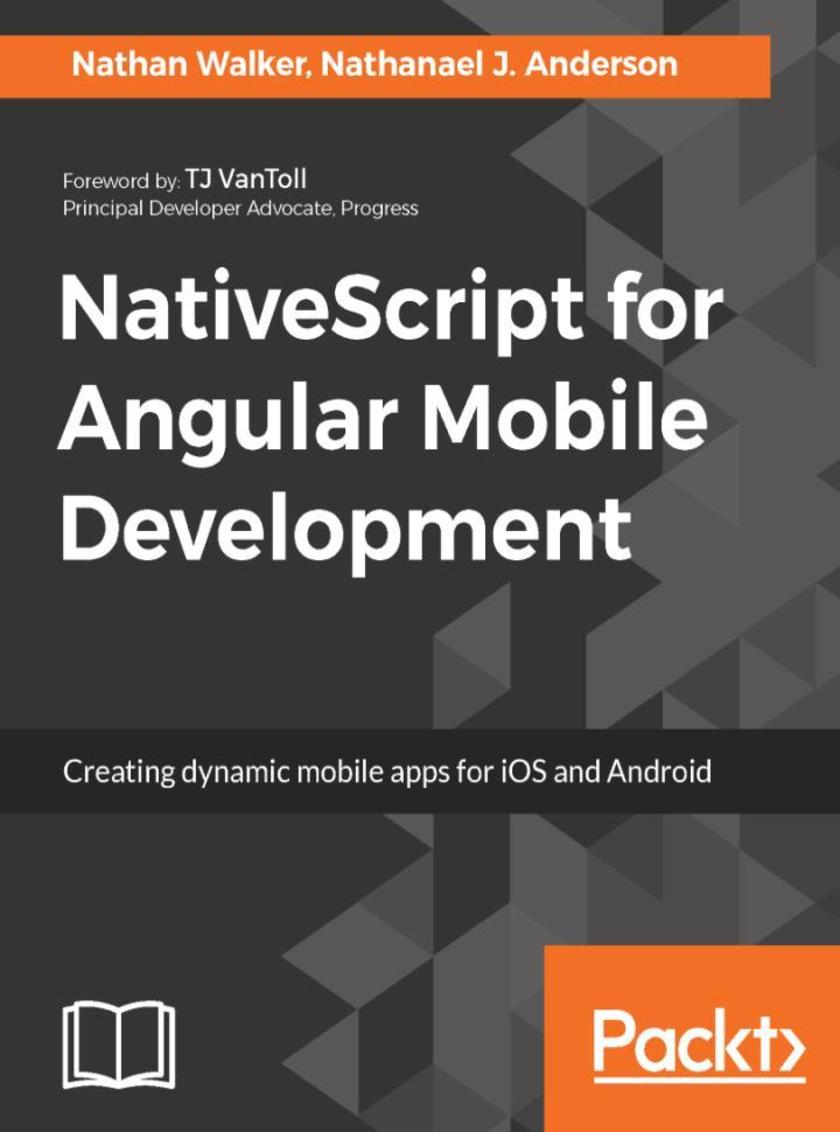
NativeScript for Angular Mobile Development
¥80.65
Learn NativeScript to build native mobile applications with Angular, TypeScript, JavaScript About This Book ? Power packed hands-on guide to help you become pro-efficient with NativeScript ? Harness the power of your web development skills with JavaScript and Angular to build cross-platform mobile apps ? Create highly maintainable and feature-rich apps with TypeScript and NativeScript APIs Who This Book Is For This book assumes you have a general understanding of TypeScript, have heard of NativeScript and know what it's about, and are familiar with Angular (2.0). You don't need to be an expert in any of these technologies, but having some sense of them before reading is recommended this book, which is ideal for intermediate to advanced users. What You Will Learn ? Bootstrap a NativeScript for Angular app ? Best practices for project organization ? Style your app with CSS/SASS ? Use Angular together with NativeScript to create cross-platform mobile apps ? Take advantage of powerful Angular features, such as Dependency Injection, Components, Directives, Pipes, and NgModules right within your NativeScript apps ?Gain insight into great project organization and best practices ?Use Objective C/Swift and Java APIs directly from TypeScript ?Use rich framework features and third-party plugins ?Style your app with CSS/SASS ?Integrate @ngrx/store + @ngrx/effects to help with state management ?Test your app with Karma and Appium In Detail NativeScript is an open source framework that is built by Progress in order to build truly native mobile apps with TypeScript, JavaScript or just Angular which is an open source framework built by Google that offers declarative templates, dependency injection, and fully featured modules to build rich applications. Angular’s versatile view handling architecture allows your views to be rendered as highly performant UI components native to iOS and Android mobile platforms. This decoupling of the view rendering layer in Angular combined with the power of native APIs with NativeScript have together created the powerful and exciting technology stack of NativeScript for Angular. This book focuses on the key concepts that you will need to know to build a NativeScript for Angular mobile app for iOS and Android. We’ll build a fun multitrack recording studio app, touching on powerful key concepts from both technologies that you may need to know when you start building an app of your own. The structure of the book takes the reader from a void to a deployed app on both the App Store and Google Play, serving as a reference guide and valuable tips/tricks handbook. By the end of this book, you’ll know majority of key concepts needed to build a successful NativeScript for Angular app. Style and approach This step-by-step advanced tutorial focuses on the key concepts you need to know to build a NativeScript for Angular mobile app for iOS and Android.
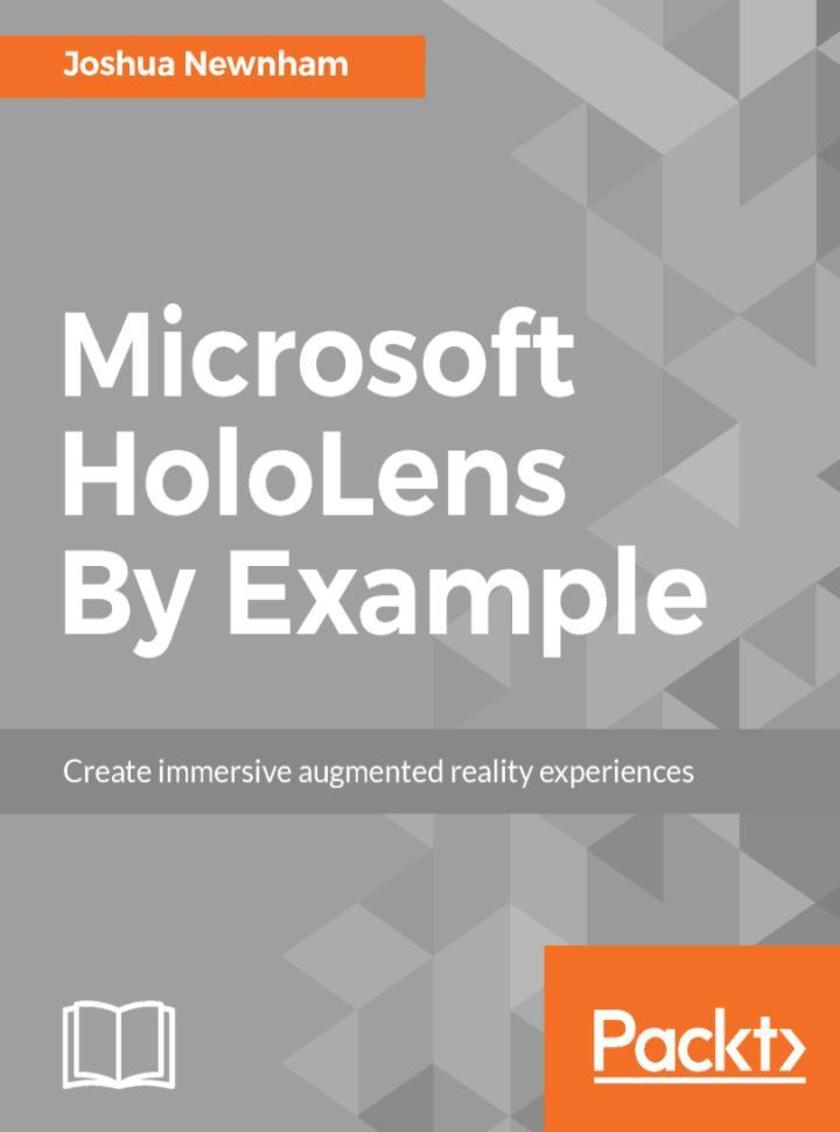
Microsoft HoloLens By Example
¥80.65
Get to grips with HoloLens development as you create mixed reality apps from scratch About This Book ? Create awesome Augmented Reality (AR) apps for the Microsoft HoloLens platform ? Unleash the power of Unity SDK for HoloLens to create next generation AR apps ? Explore the exciting world of gesture control, visual mapping, voice command for apps, and many more cutting edge possibilities with HoloLens Who This Book Is For This book is for developers who have some experience with programming in any of the major languages such as C#, C++, and so on. You do need any knowledge of Augmented Reality development. What You Will Learn ? Extend the computing experience beyond the flat glass screen by placing and embedding virtual objects holograms) into the physical world ? Interact with the holograms using gaze, gestures, and voice ? Enhance the experience with spatial sound ? Allow multiple users to naturally collaborate with each other ? Integrate voice commands into your own HoloLens projects ? Experiment with techniques to better understand the real world ? Implement a user interface in Mixed Reality ? Blend the virtual and physical world by making the holograms interact and react to the physical environment In Detail Are you a developer who is fascinated with Microsoft HoloLens and its capabilities? Do you want to learn the intricacies of working with the HoloLens SDK and create your own apps? If so, this is the book for you. This book introduces and demystifies the HoloLens platform and introduces new ways you can interact with computers (Mixed Reality). It will teach you the important concepts, get you excited about the possibilities, and give you the tools to continue exploring and experimenting. You will go through the journey of creating four independent examples throughout the book, two using DirectX and two using Unity. You will learn to implement spatial mapping and gesture control, incorporate spatial sound, and work with different types of input and gaze. You will also learn to use the Unity 5 SDK for HoloLens and create apps with it. Collectively, the apps explore the major concepts of HoloLens, but each app is independent, giving you the flexibility to choose where to start (and end). Style and approach This book takes an example-based approach where you’ll build AR apps with increasing difficulty. You will learn more about HoloLens platform as well as AR app development in general.
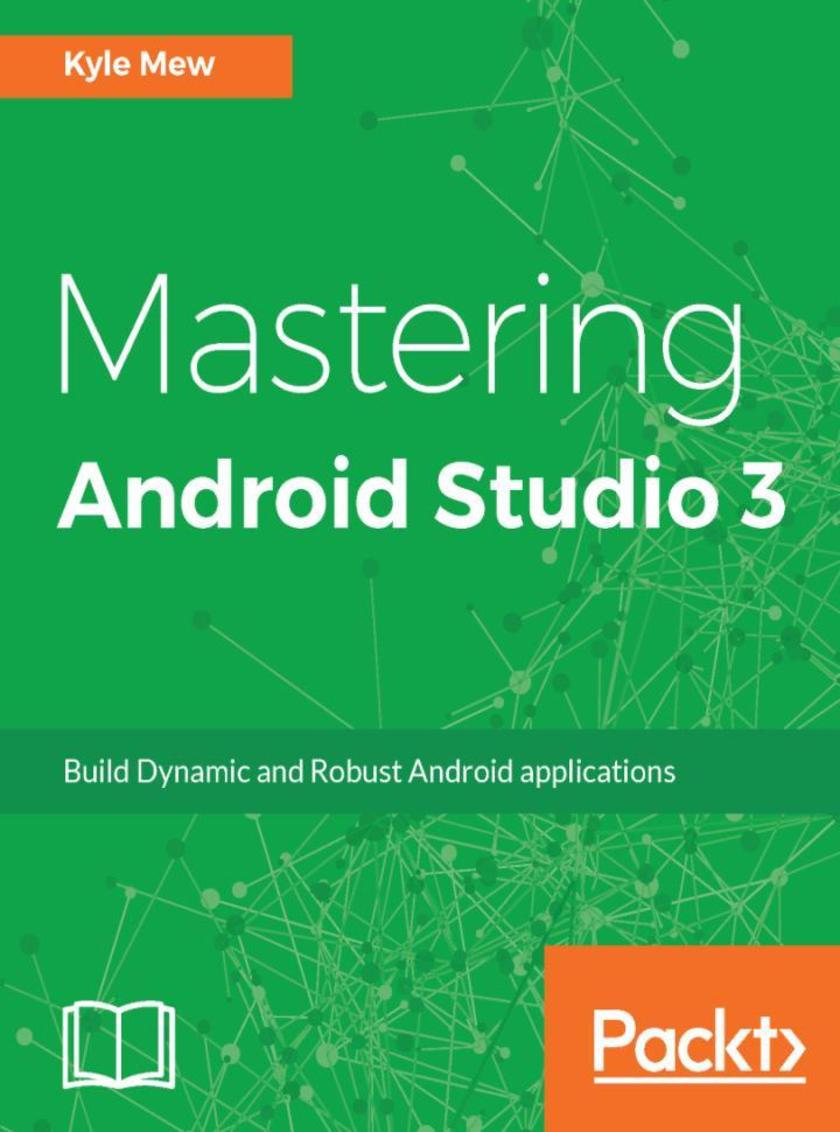
Mastering Android Studio 3
¥80.65
Unleash the power of Android Studio 3 to develop mobile applications faster and efficiently. About This Book ? Use Android Studio not just as an IDE but as a complete testing and build solution ? Produce customized APKs with Gradle to suit various versions of an app, such as test versions and free versions of an otherwise paid app. ? Explore all aspects of UI development and testing using working XML and Java examples. ? Learn seamless migration from Eclipse and other development platforms to Android Studio. Who This Book Is For This book targets developers, with experience of developing for Android, who are new to Android Studio or wish to migrate from another IDE such as Eclipse. This book will show you how to get the utmost from this powerful tool. What You Will Learn ? Create styles, themes, and material designs ? Set up, configure, and run virtual devices using the AVD manager ? Improve the design of your application using support libraries ? Learn about GitHub libraries ? Use emulators to design layouts for a wide variety of devices, including wearables. ? Improve application performance in terms of memory, speed, and power usage In Detail Android Studio is an Integrated Development Environment (IDE) designed for developing Android apps. As with most development processes, Android keeps resources and logic nicely separated, and so this book covers the management of imagery and other resources, and the development and testing tools provided by the IDE. After introducing the software, the book moves straight into UI development using the sophisticated, WYSIWYG layout editor and XML code to design and test complex interfaces for a wide variety of screen configurations. With activity design covered, the book continues to guide the reader through application logic development, exploring the latest APIs provided by the SDK. Each topic will be demonstrated by working code samples that can be run on a device or emulator. One of Android Studio's greatest features is the large number of third-party plugins available for it, and throughout the book we will be exploring the most useful of these, along with samples and libraries that can be found on GitHub. The final module of the book deals with the final stages of development: building and distribution. The book concludes by taking the reader through the registration and publication processes required by Google. By the time you have finished the book, you will be able to build faster, smoother, and error-free Android applications, in less time and with fewer complications than you ever thought possible. Style and approach This is a step-by-step guide with examples demonstrating how Android Studio can be used as a complete solution for developing, testing, and deploying apps from start to finish.
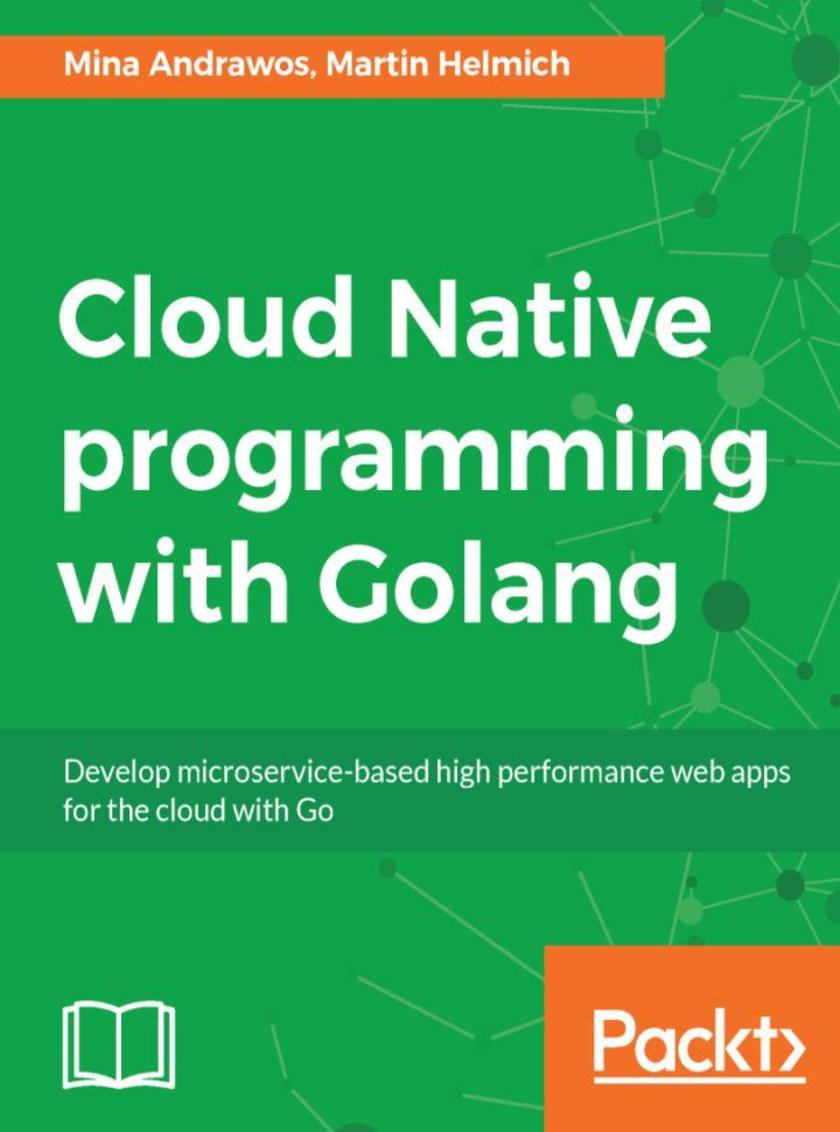
Cloud Native programming with Golang
¥80.65
Discover practical techniques to build cloud-native apps that are scalable, reliable, and always available. About This Book ? Build well-designed and secure microservices. Enrich your microservices with continous integration and monitoring. ? Containerize your application with Docker ? Deploy your application to AWS. Learn how to utilize the powerful AWS services from within your application Who This Book Is For This book is for developers who want to begin building secure, resilient, robust, and scalable Go applications that are cloud native. Some knowledge of the Go programming language should be sufficient.To build the front-end application, you will also need some knowledge of JavaScript programming. What You Will Learn ? Understand modern software applications architectures ? Build secure microservices that can effectively communicate with other services ? Get to know about event-driven architectures by diving into message queues such as Kafka, Rabbitmq, and AWS SQS. ? Understand key modern database technologies such as MongoDB, and Amazon’s DynamoDB ? Leverage the power of containers ? Explore Amazon cloud services fundamentals ? Know how to utilize the power of the Go language to access key services in the Amazon cloud such as S3, SQS, DynamoDB and more. ? Build front-end applications using ReactJS with Go ? Implement CD for modern applications In Detail Cloud computing and microservices are two very important concepts in modern software architecture. They represent key skills that ambitious software engineers need to acquire in order to design and build software applications capable of performing and scaling. Go is a modern cross-platform programming language that is very powerful yet simple; it is an excellent choice for microservices and cloud applications. Go is gaining more and more popularity, and becoming a very attractive skill.. The book will take you on a journey into the world of microservices and cloud computing with the help of Go. It will start by covering the software architectural patterns of cloud applications, as well as practical concepts regarding how to scale, distribute, and deploy those applications. You will also learn how to build a JavaScript-based front-end for your application, using TypeScript and React. From there, we dive into commercial cloud offerings by covering AWS. Finally, we conclude our book by providing some overviews of other concepts and technologies that the reader can explore to move from where the book leaves off. Style and approach This book provides practical techniques, code examples, and architectural patterns required to build cloud native microservices in the Go language. It progresses through the subjects in a step-by-step manner. In each step, we cover the technical concepts behind it, the design considerations, and the code needed to build it.
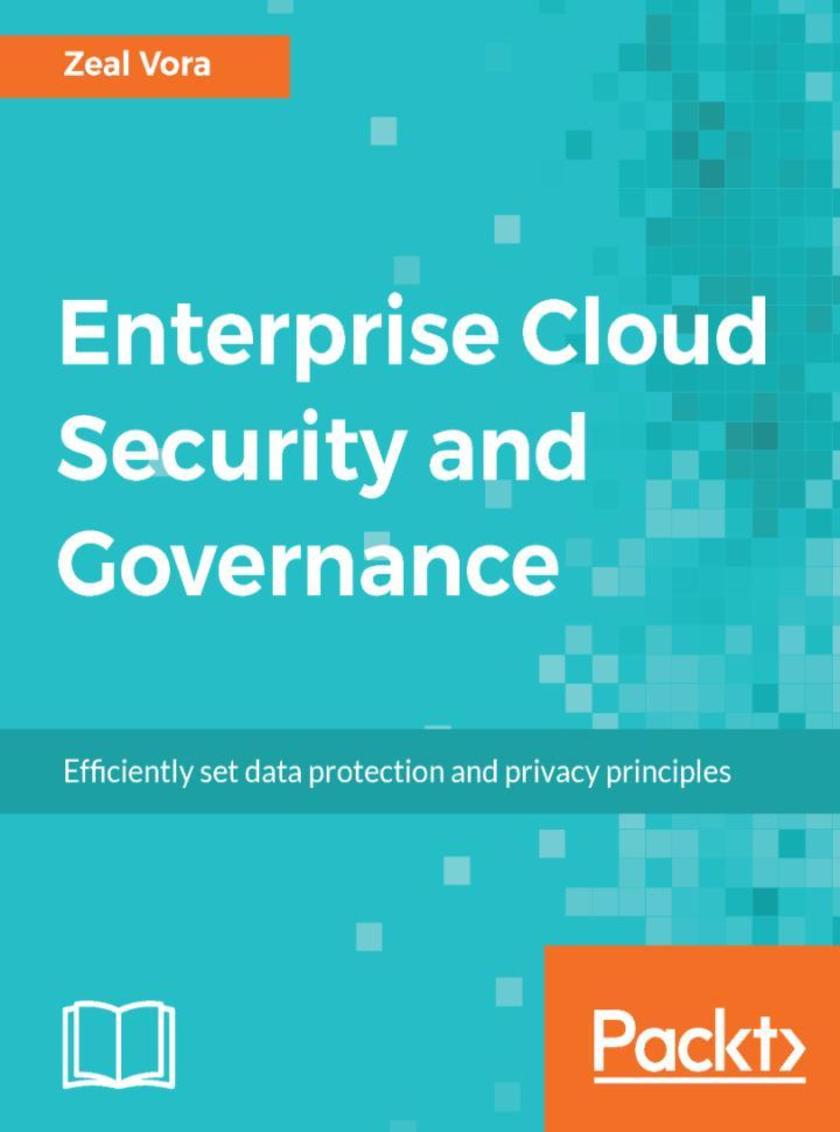
Enterprise Cloud Security and Governance
¥80.65
Build a resilient cloud architecture to tackle data disasters with ease About This Book ? Gain a firm grasp of Cloud data security and governance, irrespective of your Cloud platform ? Practical examples to ensure you secure your Cloud environment efficiently ? A step-by-step guide that will teach you the unique techniques and methodologies of Cloud data governance Who This Book Is For If you are a cloud security professional who wants to ensure cloud security and data governance no matter the environment, then this book is for you. A basic understanding of working on any cloud platform would be beneficial. What You Will Learn ? Configure your firewall and Network ACL ? Protect your system against DDOS and application-level attacks ? Explore cryptography and data security for your cloud ? Get to grips with configuration management tools to automate your security tasks ? Perform vulnerability scanning with the help of the standard tools in the industry ? Learn about central log management In Detail Modern day businesses and enterprises are moving to the Cloud, to improve efficiency and speed, achieve flexibility and cost effectiveness, and for on-demand Cloud services. However, enterprise Cloud security remains a major concern because migrating to the public Cloud requires transferring some control over organizational assets to the Cloud provider. There are chances these assets can be mismanaged and therefore, as a Cloud security professional, you need to be armed with techniques to help businesses minimize the risks and misuse of business data. The book starts with the basics of Cloud security and offers an understanding of various policies, governance, and compliance challenges in Cloud. This helps you build a strong foundation before you dive deep into understanding what it takes to design a secured network infrastructure and a well-architected application using various security services in the Cloud environment. Automating security tasks, such as Server Hardening with Ansible, and other automation services, such as Monit, will monitor other security daemons and take the necessary action in case these security daemons are stopped maliciously. In short, this book has everything you need to secure your Cloud environment with. It is your ticket to obtain industry-adopted best practices for developing a secure, highly available, and fault-tolerant architecture for organizations. Style and approach This book follows a step-by-step, practical approach to secure your applications and data when they are located remotely.
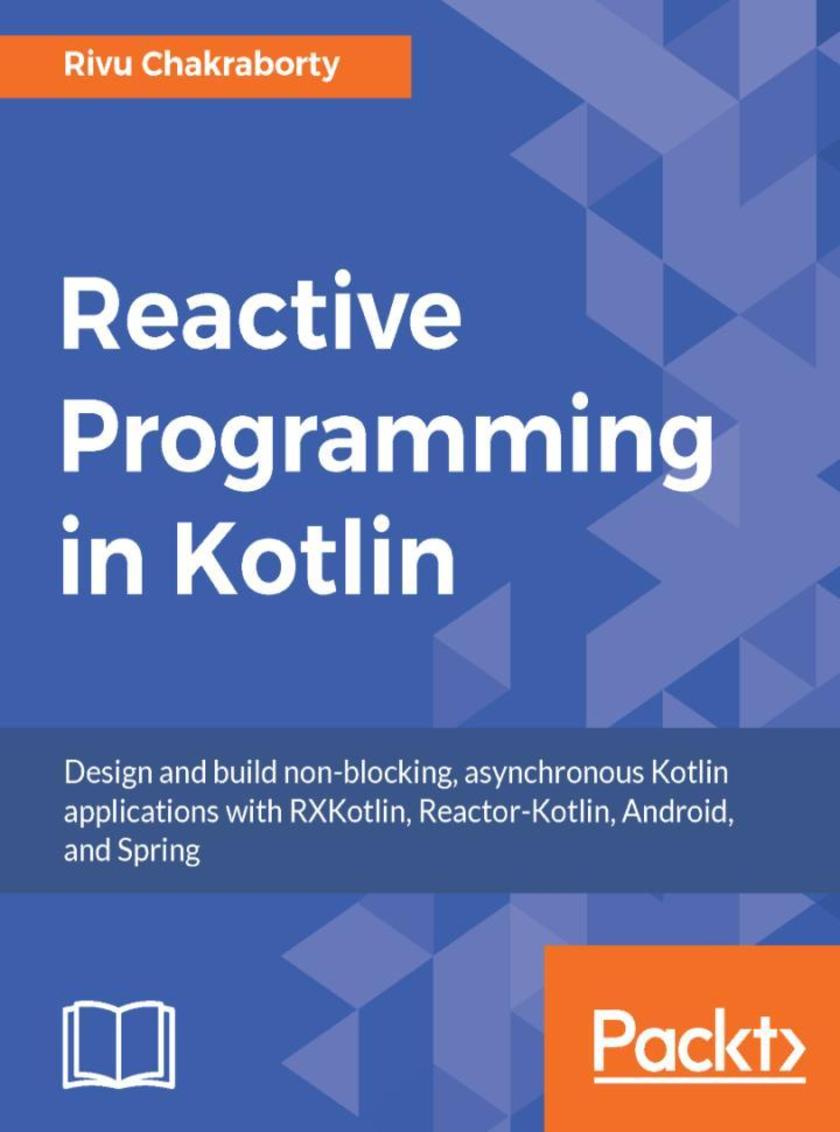
Reactive Programming in Kotlin
¥80.65
Learn how to implement Reactive Programming paradigms with Kotlin, and apply them to web programming with Spring Framework 5.0 and in Android Application Development. About This Book ? Learn how to solve blocking user experience with Reactive Programming and get deep insights into RxKotlin ? Integrate Reactive Kotlin with Spring and build fantastic Android Apps with RxKotlin and RxAndroid ? Build reactive architectures that reduce complexity throughout the development process and make your apps(web and Android) scalable Who This Book Is For This book is for Kotlin developers who would like to build fault-tolerant, scalable, and distributed systems. A basic knowledge of Kotlin is required, but no prior knowledge of reactive programming. What You Will Learn ? Learn about reactive programming paradigms and how reactive programming can improve your existing projects ? Gain in-depth knowledge in RxKotlin 2.0 and the ReactiveX Framework ? Use RxKotlin with Android ? Create your own custom operators in RxKotlin ? Use Spring Framework 5.0 with Kotlin ? Use the reactor-kotlin extension ? Build Rest APIs with Spring,Hibernate, and RxKotlin ? Use testSubscriber to test RxKotlin applications ? Use backpressure management and Flowables In Detail In today’s app-driven era, when programs are asynchronous, and responsiveness is so vital, reactive programming can help you write code that’s more reliable, easier to scale, and better-performing. Reactive programming is revolutionary. With this practical book, Kotlin developers will first learn how to view problems in the reactive way, and then build programs that leverage the best features of this exciting new programming paradigm. You will begin with the general concepts of Reactive programming and then gradually move on to working with asynchronous data streams. You will dive into advanced techniques such as manipulating time in data-flow, customizing operators and provider and how to Use the concurrency model to control asynchronicity of code and process event handlers effectively. You will then be introduced to functional reactive programming and will learn to apply FRP in practical use cases in Kotlin. This book will also take you one step forward by introducing you to spring 5 and spring boot 2 using Kotlin. By the end of the book, you will be able to build real-world applications with reactive user interfaces as well as you’ll learn to implement reactive programming paradigms in Android. Style and Approach Loaded with numerous code examples and real-life projects, this book helps you delve into Reactive Programming with Kotlin, and apply it to real-world Spring-web and Android projects, thus making all your apps reactive.
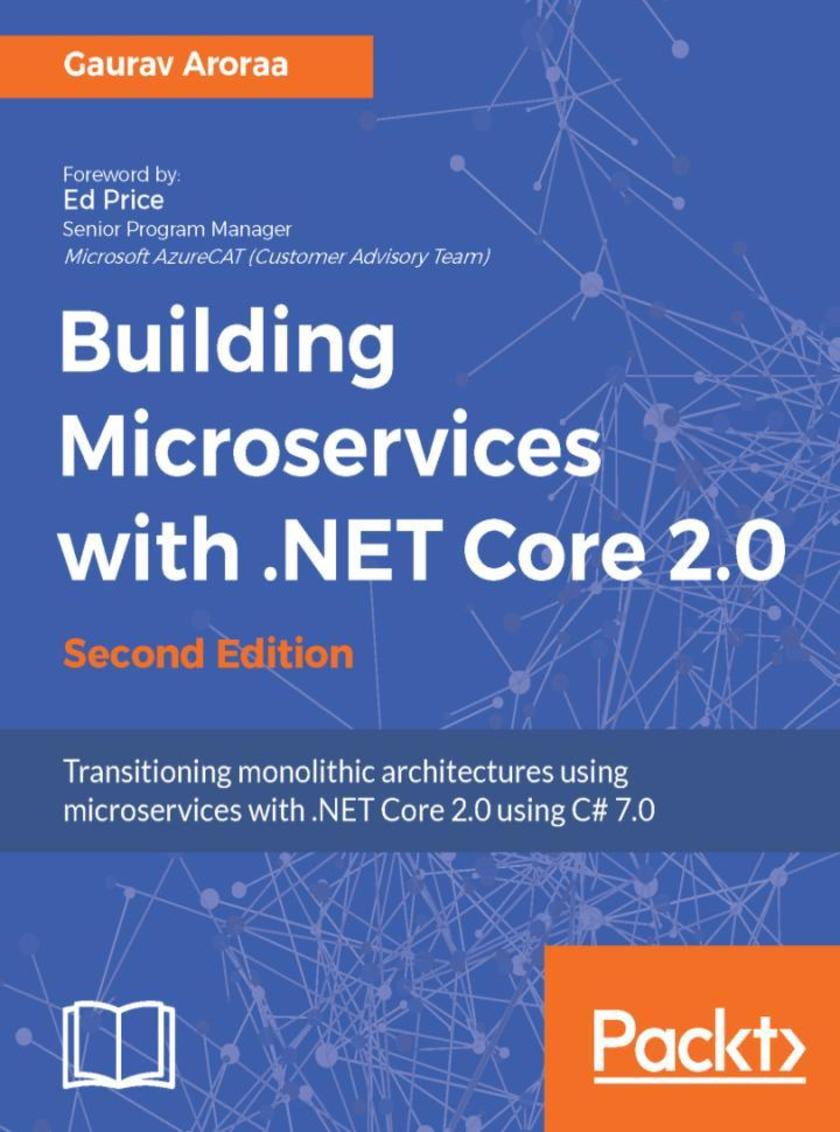
Building Microservices with .NET Core 2.0 - Second Edition
¥80.65
Architect your .NET applications by breaking them into really small pieces - microservices -using this practical, example-based guide. About This Book ? Start your microservices journey and get a broader perspective on microservices development using C# 7.0 with .NET Core 2.0 ? Build, deploy, and test microservices using ASP.Net Core, ASP.NET Core API, and Microsoft Azure Cloud ? Get the basics of reactive microservices Who This Book Is For This book is for .NET Core developers who want to learn and understand the microservices architecture and implement it in their .NET Core applications. It’s ideal for developers who are completely new to microservices or just have a theoretical understanding of this architectural approach and want to gain a practical perspective in order to better manage application complexities. What You Will Learn ? Get acquainted with Microsoft Azure Service Fabric ? Compare microservices with monolithic applications and SOA ? Learn Docker and Azure API management ? Define a service interface and implement APIs using ASP.NET Core 2.0 ? Integrate services using a synchronous approach via RESTful APIs with ASP.NET Core 2.0 ? Implement microservices security using Azure Active Directory, OpenID Connect, and OAuth 2.0 ? Understand the operation and scaling of microservices in .NET Core 2.0 ? Understand the key features of reactive microservices and implement them using reactive extensions In Detail The microservices architectural style promotes the development of complex applications as a suite of small services based on business capabilities. This book will help you identify the appropriate service boundaries within your business. We'll start by looking at what microservices are and their main characteristics. Moving forward, you will be introduced to real-life application scenarios; after assessing the current issues, we will begin the journey of transforming this application by splitting it into a suite of microservices using C# 7.0 with .NET Core 2.0. You will identify service boundaries, split the application into multiple microservices, and define service contracts. You will find out how to configure, deploy, and monitor microservices, and configure scaling to allow the application to quickly adapt to increased demand in the future. With an introduction to reactive microservices, you’ll strategically gain further value to keep your code base simple, focusing on what is more important rather than on messy asynchronous calls. Style and approach This guide serves as a stepping stone that helps .NET Core developers in their microservices architecture. This book provides just enough theory to understand the concepts and apply the examples.

Perl 6 Deep Dive
¥80.65
Learn Perl 6 effortlessly to solve everyday problems About This Book ? Filled with practical examples, this comprehensive guide explores all aspects of Perl 6. ? Leverage the power of Perl 6 concurrency to develop responsive and high-performant software. ? Delves into various programming paradigms (such as Object Oriented, functional, and reactive) that can be adopted by Perl 6 developers to write effective code. Who This Book Is For This book is for developers who would like to learn the Perl programming language. A basic knowledge of programming is assumed. What You Will Learn ? Learn the background from which Perl 6 appeared and how it developed. ? How to use Rakudo to run your programs. ? Various Perl 6 built-in types and details about their behavior ? Understand how scalar variables, hash variables, and arrays work ? Create meta operators and hyper operators ? How classes work and how to build software based on the Object Oriented Paradigm ? How Perl 6 provides support for concurrency, functional programming, and reactive programming. In Detail Perl is a family of high-level, general-purpose, interpreted, dynamic programming languages consisting of Perl 5 and Perl 6. Perl 6 helps developers write concise and declarative code that is easy to maintain. This book is an end-to-end guide that will help non-Perl developers get to grips with the language and use it to solve real-world problems. Beginning with a brief introduction to Perl 6, the first module in the book will teach you how to write and execute basic programs. The second module delves into language constructs, where you will learn about the built-in data types, variables, operators, modules, subroutines, and so on available in Perl 6. Here the book also delves deeply into data manipulation (for example, strings and text files) and you will learn how to create safe and correct Perl 6 modules. You will learn to create software in Perl by following the Object Oriented Paradigm. The final module explains in detail the incredible concurrency support provided by Perl 6. Here you will also learn about regexes, functional programming, and reactive programming in Perl 6. By the end of the book, with the help of a number of examples that you can follow and immediately run, modify, and use in practice, you will be fully conversant with the benefits of Perl 6. Style and approach This book will take you through essential Perl 6 concepts so you can implement them immediately
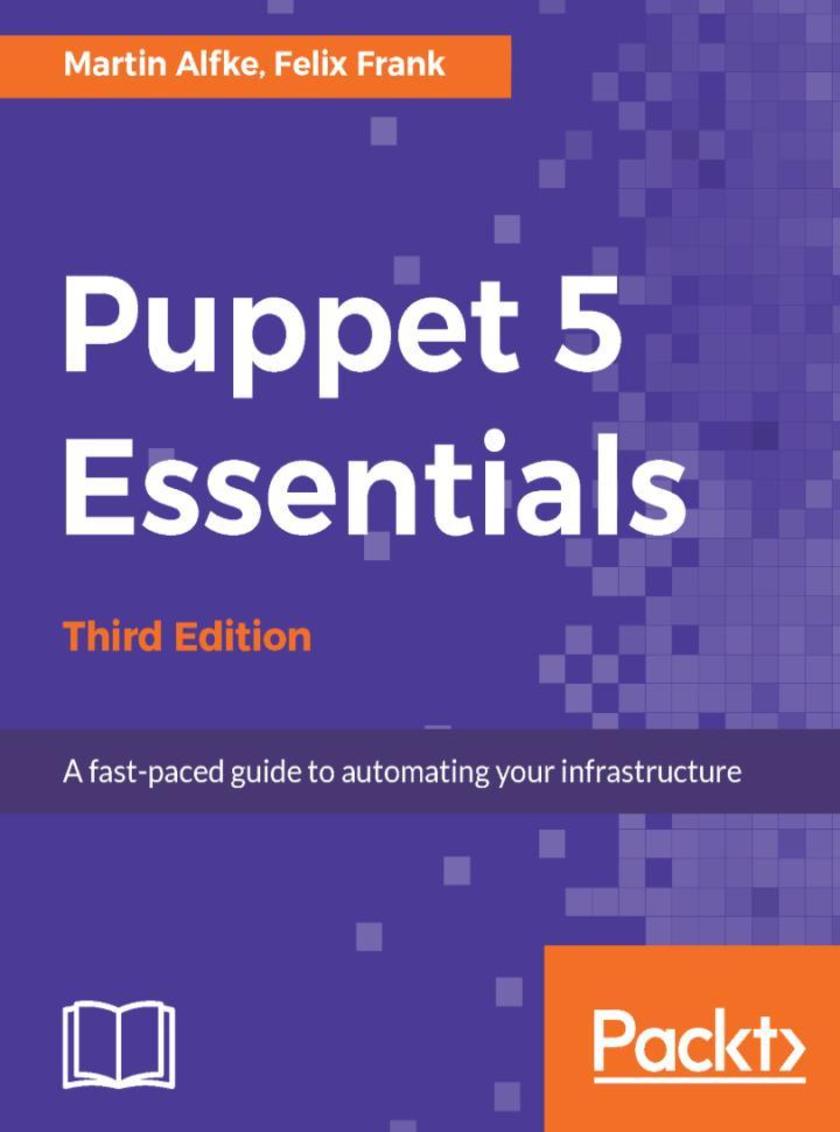
Puppet 5 Essentials - Third Edition
¥80.65
A Guide to managing servers and automation About This Book ? Breeze through Puppet's key features and performance improvements to bring real advantages to your IT infrastructure ? Discover Puppet best practices to help you avoid common mistakes and pitfalls ? Examples to help you get to grips with Puppet and succeed with everyday IT automation Who This Book Is For This book targets experienced IT professionals and new Puppet uses, who will learn all they need to know to go from installation to advanced automation. Get a rapid introduction to the essential topics and learn how to build best practices for advanced automation with Puppet. What You Will Learn ? Understand declarative configuration management ? Make use of GIT-based deployment workflows ? Extend Factor with secure elements ? Create modular and reusable Puppet code ? Extend your code base with publicly available Puppet modules ? Separate logic from data by using Hiera ? Understand and develop Puppet Roles and Profiles In Detail Puppet is a configuration management tool that allows you to automate all your IT configurations, giving you control over what you do to each Puppet Agent in a network, and when and how you do it. In this age of digital delivery and ubiquitous Internet presence, it's becoming increasingly important to implement scaleable and portable solutions, not only in terms of software, but also the system that runs it. This book gets you started quickly with Puppet and its tools in the right way. It highlights improvements in Puppet and provides solutions for upgrading. It starts with a quick introduction to Puppet in order to quickly get your IT automation platform in place. Then you learn about the Puppet Agent and its installation and configuration along with Puppet Server and its scaling options. The book adopts an innovative structure and approach, and Puppet is explained with flexible use cases that empower you to manage complex infrastructures easily. Finally, the book will take readers through Puppet and its companion tools such as Facter, Hiera, and R10k and how to make use of tool chains. Style and approach This book aims to impart all the knowledge required to tap into not only the basics of Puppet, but also its core. The basic ideas and principles of Puppet-based designs are explored and explained. Sophisticated tools are presented to enable you to use Puppet efficiently and productively.
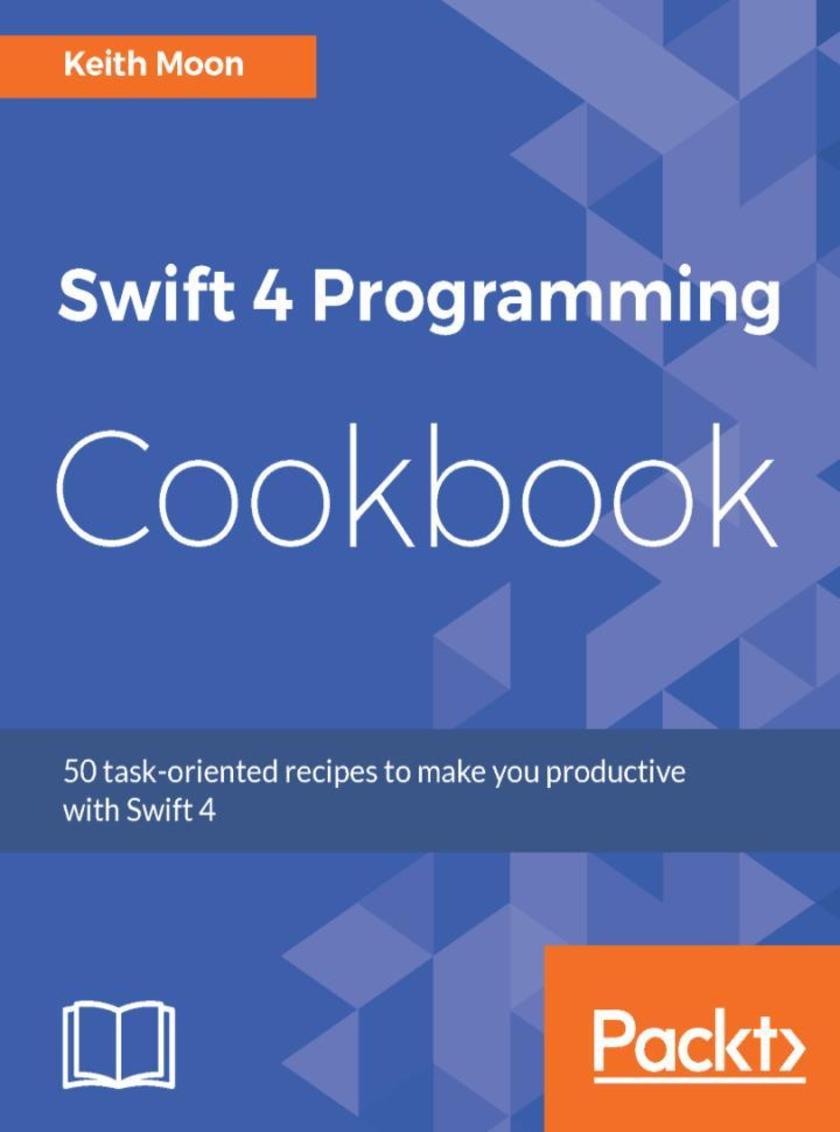
Swift 4 Programming Cookbook
¥80.65
Over 50 recipes to help you quickly and efficiently build applications with Swift 4 and Xcode 9 About This Book ? Write robust and efficient code and avoid common pitfalls using Swift 4 ? Get a comprehensive coverage of the tools and techniques needed to create multi-platform apps with Swift 4 ? Packed with easy-to-follow recipes, this book will help you develop code using the latest version of Swift Who This Book Is For If you are looking for a book to help you learn about the diverse features offered by Swift 4 along with tips and tricks to efficiently code and build applications, then this book is for you. Basic knowledge of Swift or general programming concepts will be beneficial. What You Will Learn ? Explore basic to advanced concepts in Swift 4 Programming ? Unleash advanced features of Apple's Xcode 9 IDE and Swift Playgrounds ? Learn about the conditional statements, loops, and how to handle errors in Swift ? Define flexible classes and structs using Generics, and learn about the advanced operators, and create custom operators ? Explore functionalities outside of the standard libraries of Swift ? Import your own custom functionality into Swift Playgrounds ? Run Swift on Linux and investigate server-side programming with the server side framework Vapor In Detail Swift 4 is an exciting, multi-platform, general-purpose programming language. Being open source, modern and easy to use has made Swift one of the fastest growing programming languages. If you interested in exploring it, then this book is what you need. The book begins with an introduction to the basic building blocks of Swift 4, its syntax and the functionalities of Swift constructs. Then, introduces you to Apple's Xcode 9 IDE and Swift Playgrounds, which provide an ideal platform to write, execute, and debug the codes thus initiating your development process. Next, you'll learn to bundle variables into tuples, set order to your data with an array, store key-value pairs with dictionaries and you'll learn how to use the property observers. Later, explore the decision-making and control structures in Swift and learn how to handle errors in Swift 4. Then you'll, examine the advanced features of Swift, generics and operators, and then explore the functionalities outside of the standard library, provided by frameworks such as Foundation and UIKit. Also, you'll explore advanced features of Swift Playgrounds. At the end of the book, you'll learn server-side programming aspect of Swift 4 and see how to run Swift on Linux and then investigate Vapor, one of the most popular server-side frameworks for Swift. Style and approach Each recipe addresses a specific problem, with a detailed discussion that explains the solution and offers insight into how it works.
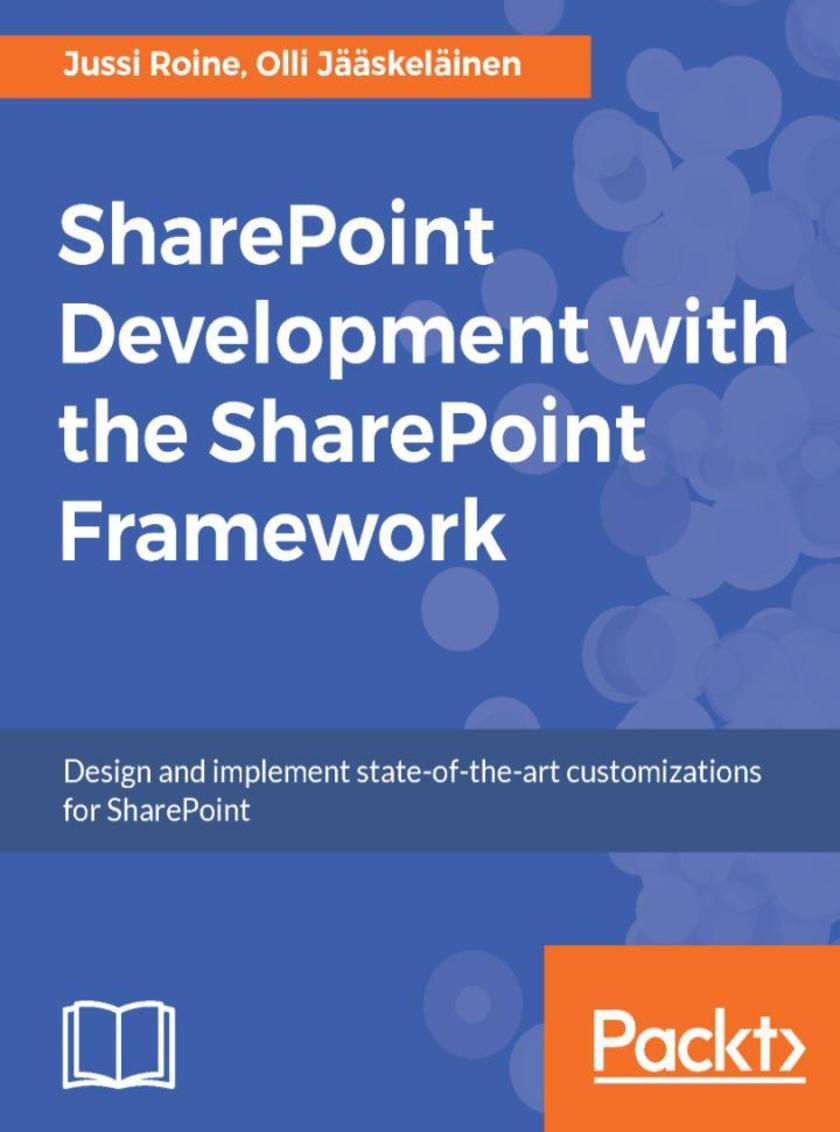
SharePoint Development with the SharePoint Framework
¥80.65
Design and create beautiful solutions using modern development tools for SharePoint Online About This Book ? Get the best out of the latest Sharepoint Framework and leverage the Sharepoint RESTful and JSOM APIs. ? Develop efficient client side applications with JavaScript injection and Sharepoint Addins. ? Get the best tips and tricks on designing your website flawlessly. Who This Book Is For This book targets current SharePoint developers, as well as people starting their journey on SharePoint development. The reader must have basic web development programming knowledge, including JavaScript and CSS. The reader should have familiarity using and managing SharePoint-based collaboration sites. What You Will Learn ? Understand what the SharePoint Framework is ? Create modern solutions using the new tools, approaches and frameworks ? Learn how to use Visual Studio Code for effective SharePoint development ? Package and deploy your code, using automation as needed ? Work with content and data stored in SharePoint ? Benefit from third party frameworks without having to build your own frameworks ? Debug and troubleshoot your code with ease ? Configure security in your application In Detail SharePoint is one of Microsoft's best known web platforms. A loyal audience of developers, IT Pros and power users use it to build line of business solutions. The SharePoint Framework (SPFx) is a great new option for developing SharePoint solutions. Many developers are creating full-trust based solutions or add-in solutions, while also figuring out where and how SPFx fits in the big picture. This book shows you how design, build, deploy and manage SPFx based solutions for SharePoint Online and SharePoint 2016. The book starts by getting you familiar with the basic capabilities of SPFx. After that, we will walk through the tool-chain on how to best create production-ready solutions that can be easily deployed manually or fully automated throughout your target Office 365 tenants. We describe how to configure and use Visual Studio Code, the de facto development environment for SPFx-based solutions. Next, we provide guidance and a solid approach to packaging and deploying your code. We also present a straightforward approach to troubleshooting and debugging your code an environment where business applications run on the client side instead of the server side. Style and approach The approach will be that of a practical tutorial which will take you through every topic using code samples and working examples.
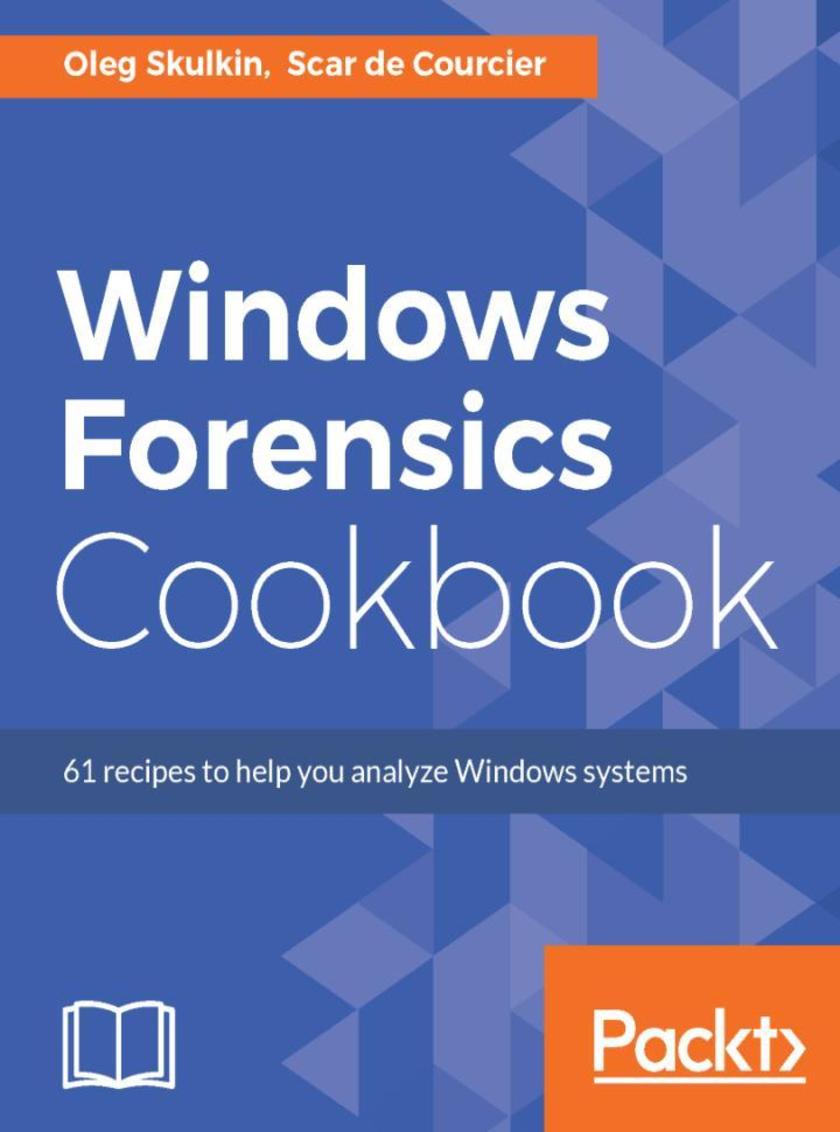
Windows Forensics Cookbook
¥80.65
Maximize the power of Windows Forensics to perform highly effective forensic investigations About This Book ? Prepare and perform investigations using powerful tools for Windows, ? Collect and validate evidence from suspects and computers and uncover clues that are otherwise difficult ? Packed with powerful recipes to perform highly effective field investigations Who This Book Is For If you are a forensic analyst or incident response professional who wants to perform computer forensics investigations for the Windows platform and expand your took kit, then this book is for you. What You Will Learn ? Understand the challenges of acquiring evidence from Windows systems and overcome them ? Acquire and analyze Windows memory and drive data with modern forensic tools. ? Extract and analyze data from Windows file systems, shadow copies and the registry ? Understand the main Windows system artifacts and learn how to parse data from them using forensic tools ? See a forensic analysis of common web browsers, mailboxes, and instant messenger services ? Discover how Windows 10 differs from previous versions and how to overcome the specific challenges it presents ? Create a graphical timeline and visualize data, which can then be incorporated into the final report ? Troubleshoot issues that arise while performing Windows forensics In Detail Windows Forensics Cookbook provides recipes to overcome forensic challenges and helps you carry out effective investigations easily on a Windows platform. You will begin with a refresher on digital forensics and evidence acquisition, which will help you to understand the challenges faced while acquiring evidence from Windows systems. Next you will learn to acquire Windows memory data and analyze Windows systems with modern forensic tools. We also cover some more in-depth elements of forensic analysis, such as how to analyze data from Windows system artifacts, parse data from the most commonly-used web browsers and email services, and effectively report on digital forensic investigations. You will see how Windows 10 is different from previous versions and how you can overcome the specific challenges it brings. Finally, you will learn to troubleshoot issues that arise while performing digital forensic investigations. By the end of the book, you will be able to carry out forensics investigations efficiently. Style and approach This practical guide filled with hands-on, actionable recipes to detect, capture, and recover digital artifacts and deliver impeccable forensic outcomes.




 购物车
购物车 个人中心
个人中心



